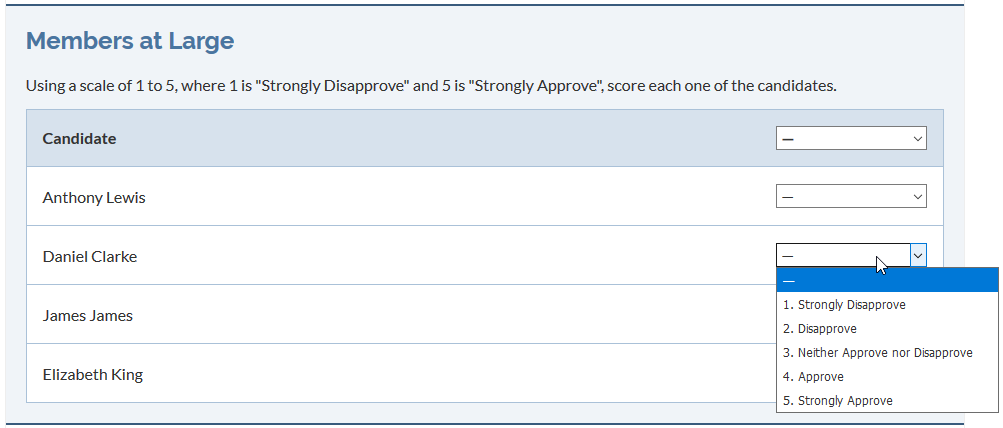Voting Process

Voters assign a score to each candidate or option in a list based on their preference for that candidate/option. Unlike a Preferential (ranked) ballot, however, the scores that are assigned do not have to be unique among the items on the ballot. Voters may assign the same score to any (or all) of the options on the ballot, or they may choose to assign unique scores to each option. All options on the ballot must receive a score for the voter to be able to submit the ballot.

How the results are calculated
Results for this voting method can be calculated one of two ways. You can have the election function as a true election, where ElectionBuddy selects a winner from each of the options, or have it function as a survey, where the scores are tallied for each option without selecting a winner.
- With a winner selected (true Scored voting):
When Scored voting is set up to have a winner selected, a winner is chosen based on average scores. The average score for each candidate or option is calculated from the total scores assigned to them, and the average score is presented. The candidate or option with the highest average score is declared the winner. - With no winner selected (i.e. Rating Scale surveying):
When Scored voting is set up to have no winner selected, the total score distribution is what is displayed for the results. The number of times a specific score was assigned to a particular candidate or option is added up by a simple algorithm, and the tally is summarized. No further calculations are performed.
For further details visit Scored Voting on Wikipedia